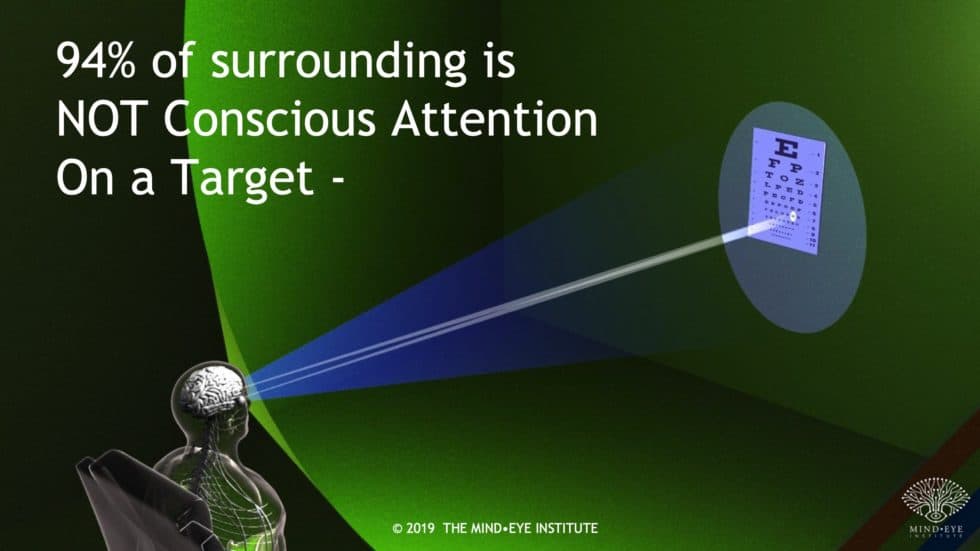Dear Editor:
The November 27, 2019 article headlined, The Great American Eye-Exam Scam, actually perpetuates an outdated concept – that eyeglasses are merely appliances to enhance eyesight clarity. Nothing, of course, could be further from the truth, although writer Yascha Mounk is at least partially correct when he intimates that most eye examinations do exactly that – offer prescriptions simply to support 20/20 sight.
Did you know only about six percent of visual awareness comes from conscious focus on specific objects? Most environmental signals passing through our retinas emanate from peripheral space – the space all around us. Unfortunately, most eye professionals continue relying on a testing system developed in 1862 when much of the nation remained unsettled, overland travel was by horseback or horse-drawn wagons, and prairies and mountains dominated individuals’ peripheral sight. This 160-year-old evaluation system addresses central eyesight by having the patient consciously look at non-moving targets across a darkened room, but ignores peripheral retinal processing, which comprises 94 percent of a person’s visual field.

We use our central eyesight for stationary objects (like letters on an eye chart) but not for “seeing” targets that are moving. Having a general awareness of our environment is highly dependent on peripheral eyesight. Modern, fast-paced society is awash in moving targets – from signs and lights whizzing past us in traffic to ever-changing GPS navigation screens and words rolling in and out of sight on scrolling web pages. We use peripheral and central eyesight in tandem to scan and shift our gaze from place to place. Standard 20/20 eye testing does not judge moving targets or assess reaction time.
The retina is made of brain tissue and sends signals to more than simply an eyesight center. Retinal signals combine (partially beneath a conscious level of awareness) with other sensory signals – from hearing, smell, taste and touch. The hypothalamus, brain stem and other brain structures receive these signals and synthesize the information. Such brain-processing activity, in combination with other internal sensory signals, then determines how a person will react and respond to the surrounding environment.
When intact, retinal processing enables people to understand and interact appropriately with the world around them. If brain circuitry is out of sync because it has been disrupted or under-developed, people can become confused about their surrounding environment and exhibit inappropriate reactions and responses. If eyes and ears are not in sync, people must continuously monitor their shifting attention, and that effort becomes exhausting.
Using prescriptive eyeglasses, lenses or other optometric interventions, eye professionals with expertise in neuro-optometric rehabilitation can help patients re-develop visual skills during recovery from debilitating symptoms of brain injuries and other neurological disorders, as well as develop new skills in patients who have been labeled with “learning problems.”
In his article, Mr. Mounk poses these questions: “How many thousands of Americans go through life seeing less well than they might because they don’t have an up-to-date prescription? How many students do poorly in school because they can’t read what’s written on the blackboard? And how many accidents are caused by drivers who can’t see the road as well as they should?”
The answers are not found in cheap lenses purchased online or from storefront optometric shops, as Mr. Mounk contends, nor are they inherent in the expensive prescriptions written by eye care practitioners who utilize 160-year-old testing methods. Seeing and quickly reacting are two different actions. The 20/20 portion of the retina is for seeing small details, such as a license plate number. The other, UNTESTED portion of the retina – the peripheral part — is used for judging where a vehicle is, how fast it is traveling and how much space separates your vehicle from another. Those visual skills are not assessed by 20/20 testing methods.
Today’s optometrists have many advanced tools to address deficits or imbalances in both central and peripheral eyesight. By selectively altering the way light disperses across the retina, thereby readjusting a patient’s visual balance and eye-ear connections, optometrists can positively affect patients’ external eyesight as well as their internal comfort. Even people who do not need glasses for seeing clearly can benefit, because therapeutic glasses can be designed for comfort – not clarity – by stimulating the edges of the eye in addition to the eye’s center. If an inability to see the board at school is what makes a child less likely to get good grades, then why are a majority of children assessed with learning problems able to see the 20/20 line on the eye chart easily?
We are in the 21st century, understanding much more about brain plasticity and the role of the retina as a two-way portal into the mind and body. Those are concepts not addressed by any cheap pair of online or catalog lenses. It’s truly time to leave 20/20 testing where it belongs – in the 20th century.
Deborah Zelinsky, O.D.
Founder, Executive Research Director
Mind-Eye Institute
